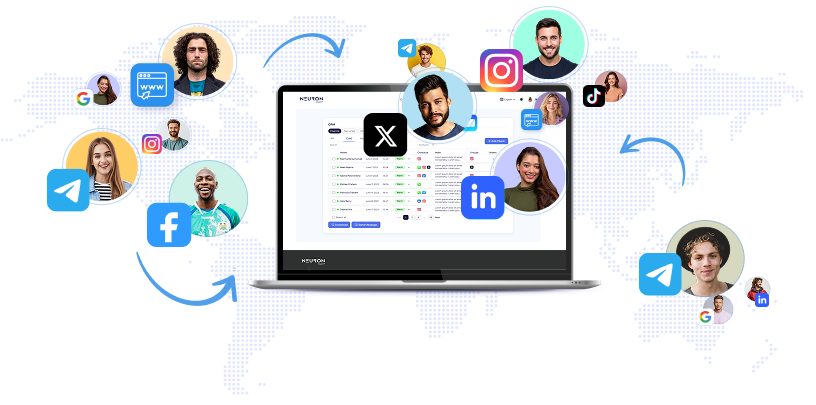
When OpenAI introduced ChatGPT, its natural language model, in November, local news publishers were quick to take notice, recognizing the potential value it could bring to their journalism. One such publisher was Scott Brodbeck, the founder and CEO of Local News Now, which operates several local news sites in Virginia, including the flagship ARLnow. With a modest editorial staff of seven across his three outlets, Brodbeck had already been leveraging automation to stretch his resources even before delving into artificial intelligence. Over a few months, Brodbeck successfully implemented a range of AI-powered automations. These experiments included tools for identifying typos in newly published articles, generating summarized story and press release briefs, analyzing the tone of news articles, evaluating event calendar submissions, and assisting in writing sponsored content. One notable project involved an AI-generated morning newsletter for ARLNow, which incorporated summaries of the outlet's stories from the previous day. "When you only have two journalists working on a site, asking them to report on stories and handle all these additional tasks — it adds up, " said Brodbeck. "I want them to focus on actual journalism, not on these miscellaneous tasks. Having AI to handle that has opened up new possibilities that were previously unavailable to us. " While national outlets have been making headlines with their often ill-fated ventures into AI, and the media landscape is constantly buzzing with news of executives planning to integrate AI into their newsroom workflows, some outlets have been exploring the use of AI and automation in local reporting for several years. The Associated Press, for instance, initiated its local news AI initiative in 2021 and recently committed to collaborating on AI projects with five local newsrooms. In Ohio, Richland Source, a local news outlet in Mansfield, has been utilizing content automation to cover an estimated 10, 000 high school sports games annually across the state. "We started using AI in our operations back in 2018, " said Jay Allred, CEO of Richland Source. "We had this hypothesis — what if we could automatically cover every high school sports game in Ohio accurately, while our editors and reporters are sleeping?" Based on this goal, Richland Source developed Lede AI to assist newsrooms in covering sports games that would have otherwise been missed. Allred mentioned that receiving complaints about inaccuracies in Lede AI-generated stories is "incredibly rare" at Richland Source. Even when considering unreported errors, Allred estimates the accuracy rate of the AI-generated stories to be around 99. 6%. Although Lede AI has significantly increased Richland Source's website traffic, stories written by human reporters still outperform AI-generated content in terms of reader engagement indicators like bounce rate and session duration. Allred expressed that the purpose of Lede AI is to free up resources in smaller newsrooms, enabling human sports reporters to focus on the games that matter most to the regional audience. Brodbeck emphasized that the development of AI tools is an ongoing process of refinement.
While creating ARLnow's AI-generated newsletter, he found that the most challenging aspects were not related to AI itself but rather formatting the newsletter to ensure consistency across various email clients. In an April article announcing the launch of the newsletter, ARLnow acknowledged that the AI-written summaries sometimes missed "factual nuances" and that the AI-generated text could be "corny" and repetitive. Three months later, the newsletter remains in an experimental phase. Brodbeck mentioned in an email to Poynter that he has made adjustments after the AI-generated content became wordy and described past events using the present tense. He is currently working on enhancing the newsletter's manual adjustment capabilities to prepare it for a broader release. Meanwhile, newsrooms throughout the country are embarking on their own AI experiments. At a recent demo day held by New York University Media Lab, six teams showcased the projects they had been working on as part of the "AI & Local News Initiative" at the university. These initiatives included a speech-to-text model for real-time captioning and transcription at New York Public Radio's WNYC, as well as a conversation prompt generator aimed at improving and guiding comment sections for Graham Media Group's local news sites. Although some media organizations have eagerly adopted this new technology, their workers tend to be more skeptical. Concerns about AI replacing journalists have been raised, and media unions are increasingly addressing this issue during negotiations. Some unions have even released statements criticizing their companies' use of AI. Allred believes those concerns should not be dismissed, and he acknowledges that the development of AI tools is inevitable; they will likely become widely available at an affordable cost. The crucial question news organizations need to answer is how they intend to deploy this technology, according to Allred. At Richland Source, for example, the company has expanded its staff since implementing AI four years ago. Allred continues to advocate for a deployment approach that adds value rather than subtracting from it. "If we use AI intelligently to create more value — with the intention to free our existing reporters to focus on investigative work, high-impact civic journalism, sports features, and other tasks that only humans can do — then there should be no cause for concern, " Allred stated. "The fundamental question, especially at the corporate level, is what the intentions of that deployment are. "
None


IBM has announced a major acquisition of Confluent, proposing $31 per share, which represents a 34% premium over the previous trading day's closing price.

**The Silent Shift: How LLM Perception Drift Is Set to Transform SEO Metrics by 2026** In digital marketing’s rapidly changing landscape, a novel metric—LLM perception drift—is emerging as a potential revolution for SEO strategies

Dec 3 (Reuters) - On Wednesday, Microsoft denied a report from The Information claiming that multiple divisions within the company reduced sales growth targets for certain artificial intelligence products after several sales staff failed to meet their goals in the fiscal year ending June.

HeyGen, a leading innovator in artificial intelligence technology, has launched its new National News Video Maker, an advanced platform poised to transform the production of national news videos and breaking news segments.

TwinTone is transforming influencer marketing and social commerce through its AI-powered creator twins platform, enabling brands to instantly scale content production and engagement.

Anthropic, a prominent artificial intelligence company, has announced that it currently has no immediate plans to pursue an initial public offering (IPO).

On Wednesday, Microsoft disputed a report claiming the company had lowered growth targets for its artificial intelligence software sales after many salespeople failed to meet those goals in the previous fiscal year.
Launch your AI-powered team to automate Marketing, Sales & Growth

and get clients on autopilot — from social media and search engines. No ads needed
Begin getting your first leads today